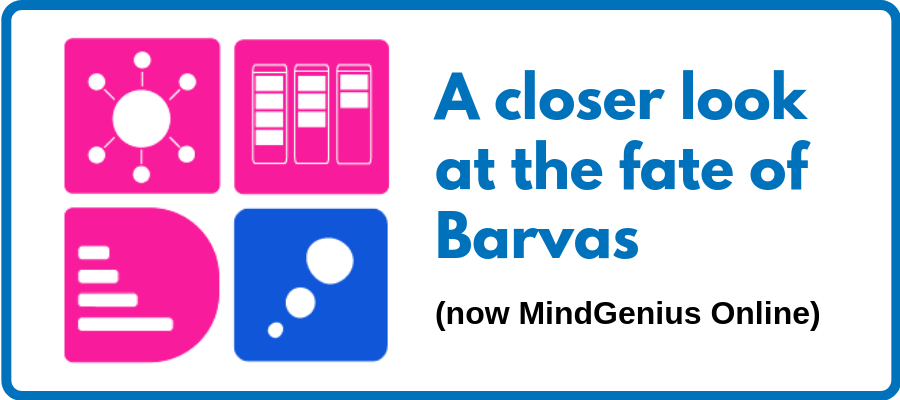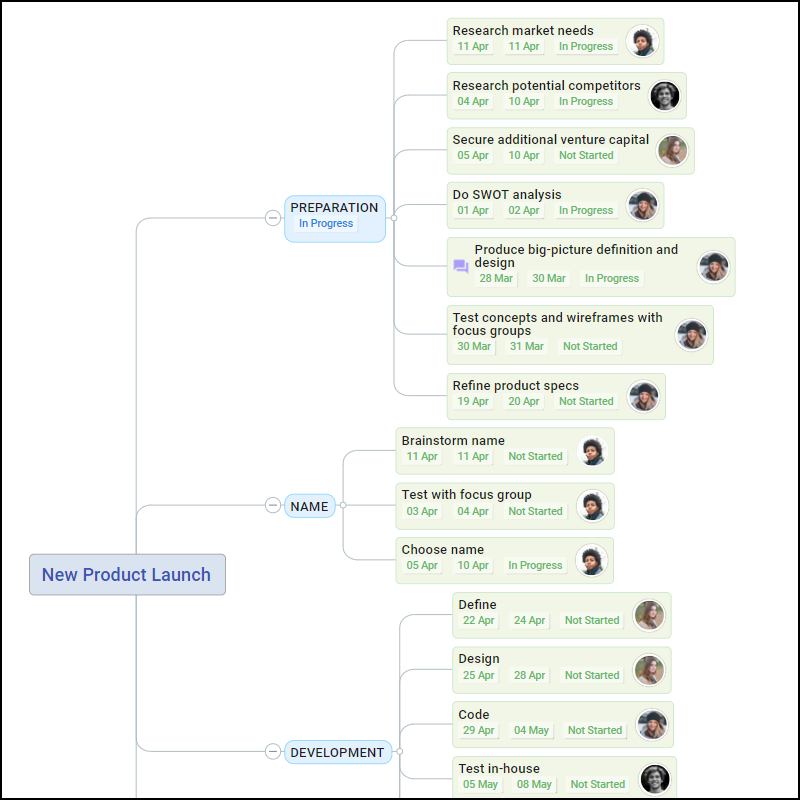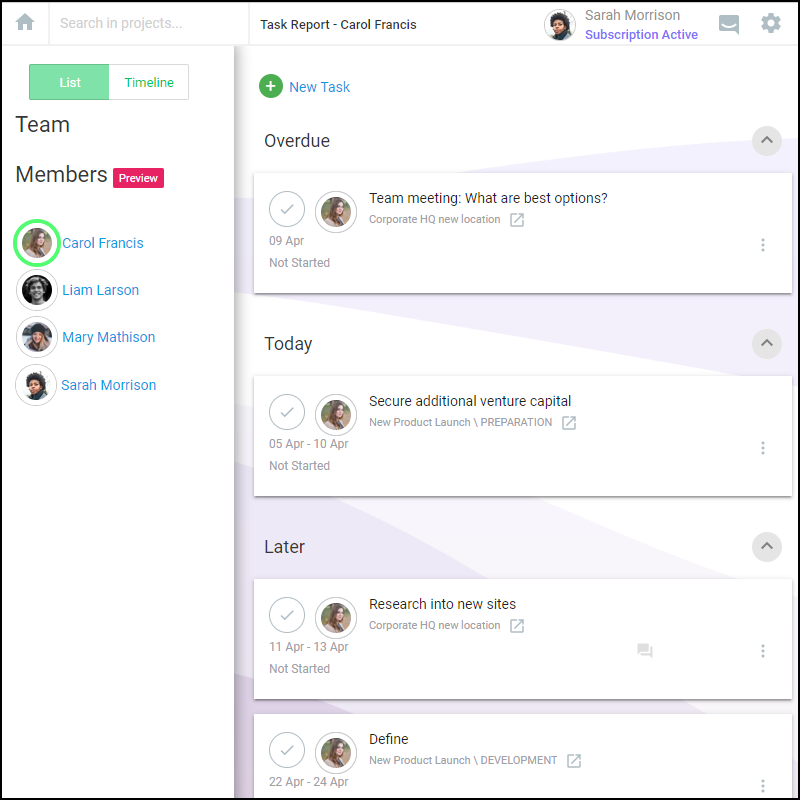
Recently, the developers of MindGenius announced that it was converting Barvas, its online mind mapping and agile project management tool, into MindGenius Online.
To help you better understand this transition and the thinking behind it, I recently spoke with marketing director Fiona Macintyre:
Chuck Frey: Why did you originally develop Barvas? What was the vision for this application? What made it unique at the time it was launched?
Fiona Macintyre: We all see the benefits a tool such as MindGenius brings to an organization. However, the challenge all mind mapping developers have is in getting their application used in day-to-day operations.
There is a tendency to use mind mapping techniques at the front end of solving a challenge or in managing projects, but often other tools are used for scheduling and managing work in progress. This means that mind map tools are perceived as more lift and lay as opposed to daily productivity tools.

MindGenius Online (Barvas) aimed to extend the capability of these tools to provide credible alternatives to expensive project and task management applications and this is why extensive capabilities in those areas are built in MindGenius Online.
In addition, it was important to provide an application that was capable of being used irrespective of platform or device used. Again, that’s the reason it’s available to anyone with a browser and an internet connection.
Frey: Was it challenging to help prospective buyers understand what Barvas was and what made it unique? This is frequently a challenge with a new product or brand.
Macintyre: It is always challenging to bring a new product to market. In addition, it’s challenging to bring to market an architecturally different alternative to your core application for the very reason that one has evolved for over 15 years and the other is relatively sparse by comparison.
Until Barvas had matured to provide comparable capability to MindGenius, we felt it important to create a differentiation between both applications. But it was always part of our strategy to bring it forward as MindGenius something or other at some point in the future when we felt they could co-exist and compare with each other. That time is now. It is also important to understand that the capability to manage work in progress has now been added to the original MindGenius application, so each product spurs the other on.
Frey: Has anything changed about the application besides its name?
Macintyre: Over the last three years, MindGenius has added significant capability as it has matured. We’ve also added extensive functionality to the original application so it can become a vital day-to-day application. Now, both applications can comfortably co-exist.
We have customers that use either one product or the other and some who use both. Some prefer to work in the original application when thinking things through and use MindGenius Online when larger teams get involved. It’s all about choice and what constraints need to be managed. In cross-platform teams using Windows, Web and iOS platforms, MindGenius Online provides a seamless way of working. It supports remote working better than file-based applications, but ultimately it’s all about choice in a world where users tend to seamlessly jump between platforms and devices throughout the day, which was something we didn’t need to consider ten years ago.

Frey: When Barvas was first launched, it was positioned as a tool for project management for non-project managers. It also adopted some of the tools and methods of agile project management. It looks like that continues to be a focus now that it has been re-launched as MindGenius Online, correct?
Macintyre: Exactly. We will continue to develop the application in this direction whilst not forgetting the value that mind mapping techniques bring to day-to-day challenges.
Frey: Who is the ideal customer for MindGenius Online?
Macintyre: MindGenius Online is ideal for small teams (5-10 people) who need true collaborative project management. They face the challenge of needing to ensuring real-time communication and status is available whether the teams are across the hall or across the globe. As with our desktop product, the use is varied and unlimited in the project challenges that it can be applied to as we are focused on providing solutions to the key challenges of collaborative project management:
- Ensure your stakeholders all share the same expectations,
- Quickly produce a solid plan – detailed and realistic,
- Ensure the team knows what they need to do every day,
- Keep collaboration and communication simple and fail-safe, and
- Provide instant access to a variety of important project information
Frey: What’s next for MindGenius Online?
Macintyre: With the number of projects that we now see teams managing through MindGenius Online we will continue to enhance the oversight and reporting features. We recently added the ability to review the workload of your team across all projects as a consequence of listening to our users and we will continue to develop other Dashboard and reporting features. We are excited at the addition of the Task Board views in both products and see many opportunities to continue to explore how we can add value to a teams day to day working practice. As ever lots of ideas to juggle but we are excited about the future roadmap for both products.
For more information about the capabilities of MindGenius Online, visit the product page here.

Leave a Reply